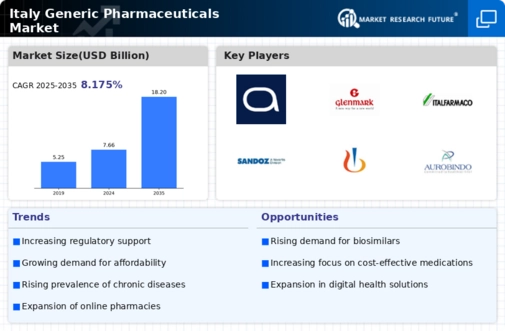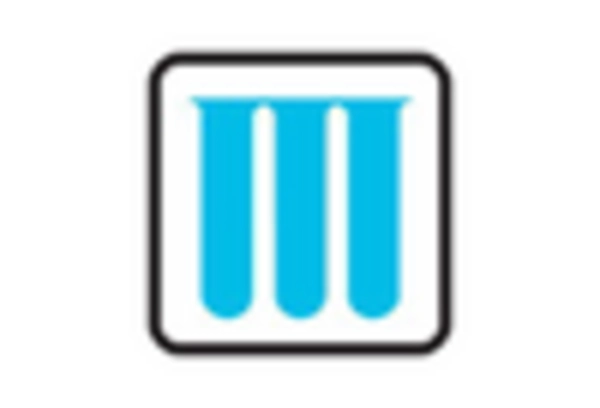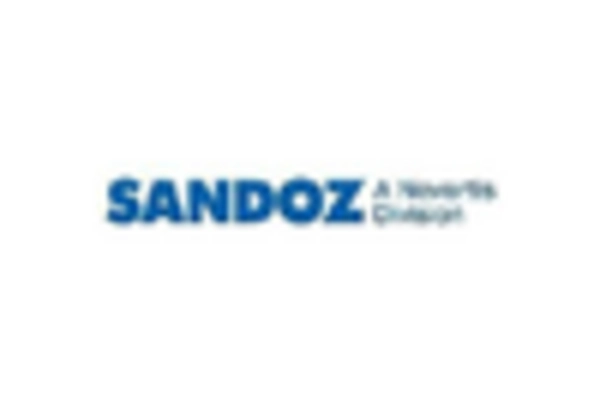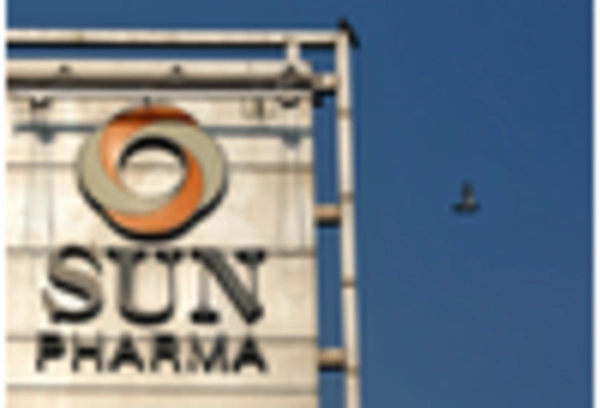The generic pharmaceuticals market in Italy is characterized by a competitive landscape that is increasingly shaped by innovation, strategic partnerships, and regulatory dynamics. Key players such as Teva Pharmaceutical Industries (IL), Sandoz (CH), and Mylan (US) are actively pursuing strategies that emphasize product diversification and market penetration. Teva, for instance, focuses on expanding its biosimilars portfolio, which appears to be a critical growth driver in a market that is progressively leaning towards biologics. Sandoz, a division of Novartis, is enhancing its operational capabilities through digital transformation initiatives, which may streamline its supply chain and improve efficiency. Mylan, on the other hand, is concentrating on strategic acquisitions to bolster its product offerings, thereby enhancing its competitive positioning in the Italian market.
The business tactics employed by these companies reflect a moderately fragmented market structure, where local manufacturing and supply chain optimization are pivotal. Companies are increasingly localizing their production to mitigate risks associated with global supply chains, which have been under scrutiny in recent years. This localization strategy not only reduces costs but also enhances responsiveness to local market demands, thereby fostering a more resilient operational framework.
In October 2025, Teva Pharmaceutical Industries (IL) announced a partnership with a local Italian biotech firm to co-develop a new line of generic biologics. This collaboration is strategically significant as it allows Teva to leverage local expertise while expanding its footprint in the biologics segment, which is anticipated to grow substantially in the coming years. Such partnerships may also facilitate faster regulatory approvals, thereby enhancing market entry speed.
In September 2025, Sandoz (CH) launched a new digital platform aimed at improving patient access to generic medications. This initiative underscores Sandoz's commitment to digitalization, which is increasingly becoming a cornerstone of competitive strategy in the pharmaceutical sector. By enhancing patient engagement and streamlining the prescription process, Sandoz is likely to improve its market share and customer loyalty.
In August 2025, Mylan (US) completed the acquisition of a smaller Italian generic manufacturer, which is expected to expand its product portfolio and distribution capabilities in Italy. This acquisition not only strengthens Mylan's market presence but also aligns with its broader strategy of enhancing operational efficiencies through scale. The integration of local manufacturing capabilities may also provide Mylan with a competitive edge in terms of cost and supply chain reliability.
As of November 2025, the competitive trends in the generic pharmaceuticals market are increasingly influenced by digitalization, sustainability, and the integration of artificial intelligence (AI) in drug development processes. Strategic alliances are becoming more prevalent, as companies recognize the value of collaboration in navigating complex regulatory environments and accelerating innovation. The shift from price-based competition to a focus on technological advancement and supply chain reliability is evident, suggesting that future competitive differentiation will hinge on the ability to innovate and adapt to changing market dynamics.

















Leave a Comment